It's Saturday morning at Bondi and just up from the beach there's a small crowd gathering. Mums stand chatting with their young kids as they carry over garbage bags from their cars. Men and women with greased hair and stained jeans join them, pushing their shopping trolleys towards the commotion. Bondi regulars follow, carrying their "empties" from the night before. There's no sausage sizzle or freebies on offer – these people are queuing up to recycle.
In the lead up to the second anniversary of Return and Earn, it's clear New South Wales' first state-sponsored container deposit scheme has done that rare thing for a government program, actually punched through to connect in a genuine way, as witnessed by huge community embrace of the scheme.
The scheme is simple, it allows consumers in Australia's most populous state to return their drink containers for a 10-cent reward at more than 640 dedicated collection points across the state. According to Return and Earn, more than 2.7 billion containers have been collected since the program kicked off in December 2017 (and the live counter on their website shows that number keeps rising).
Containers = 💰here's what your plastic bottles look like after they've been dropped off at a return point.… https://t.co/T5YpoaUsPq— Return and Earn (@Return and Earn) 1573781642
The scheme is operated by TOMRA, a Norwegian recycling solutions company. As part of a joint venture with Cleanaway, an Australian sustainable waste management company, TOMRA provides all the technology and data for the scheme, including the reverse vending machines, a dashboard and the myTOMRA app.
Rachel Draper, TOMRA's marketing activations manager, points to the accessibility and convenience of the collection points as a key reason for the success of the scheme. "The kiosks, like the one at Bondi Beach, being in areas of high traffic has made it easier for people to participate in the scheme," she told Newsworthy.
'A container deposit scheme is not an alternative to reducing consumption.'
The NSW government claims the results of the scheme are tangible, with a 57 per cent reduction in litter volume of returnable containers, the creation of more than 500 new jobs in the recycling and sustainability fields, and incredibly, participation of close to half the state's adult population in the scheme.
To maintain the current level of community engagement over time, a spokeswoman for Return and Earn said the organisation is focused on "ensuring it becomes a routine part of every day lives".
Perhaps the biggest criticism levelled against the scheme is that it does not target consumption directly. Despite this, Return and Earn, the biggest waste reduction initiative in the state's history, has been described by theNSW Minister for Energy and Environment, Matt Kean, as "a phenomenal success". Mark Gifford, then acting CEO of the NSW Environment Protection Authority, echoed the sentiment, saying the scheme"has fundamentally changed people's thinking and behaviour towards litter".
This enthusiastic embrace of the scheme is at odds with the general state of Australia's recycling, which was thrown into chaos in January 2018 with the introduction of China's National Sword Policy. The policy saw China refuse around 50 per cent of the world's recyclable waste, which it had been handling since 1992. Up until then, it had been the world's largest importer of plastic waste, captured in the 2016 award-winning documentary Plastic China. This new policy effectively halted the annual export of more than 1 million tonnes of Australia's waste to China .
Plastic Chinawww.youtube.com
In NSW, the Return and Earn scheme has done a little to offset the pressure on local councils who are now stockpiling recyclables in an effort to avoid sending them to landfill. In neighbouring Victoria, more than 30 councils may have to send their recyclables to landfill.
At August's Council of Australian Governments (COAG) meeting, Prime Minister Scott Morrison acknowledged that only around 12 per cent of materials are properly recycled in Australia. He proposed a plan to improve the recycling system in Australia and ban export of recycled waste "as soon as practicable".
The president of Local Government NSW, Linda Scott, has emphasised the need for growing a domestic recycling industry. Return and Earn is an integral part of this. Fostering a change in behaviour and thinking is also key to TOMRA's goals as the network operator.
Draper outlined that "one of the main things [in her role] is educating the community on the scheme and there's obviously been a lot of distrust in recycling recently. So, one of my main aims has been to build trust in the scheme and explain to people why they should be returning containers through a container deposit scheme rather than just putting them in your kerbside bin."
She explained that TOMRA's motivation to participate in these schemes is creating clean loop recycling and a circular economy, pointing to research by UK not-for profit Ellen Macarthur Foundation to highlight the need for this. According to the foundation's research, only 2 per cent of the 78 million tonnes of plasticproduced annually is kept in a closed loop, while 86 per cent is lost to the environment or incinerated.
"We want to be the catalyst for Australia's transformation to a circular economy. We want to be able to be help people," Draper said. Though not a circular economy - which, by the foundation's definition, "seeks to rebuild capital, whether this is financial, manufactured, human, social or natural" - Return and Earn is creating a clean loop through single stream recycling for bottles and cans.
To set out the way it works, Draper outlined the journey of one container along that single stream. The container is collected from a reverse vending machine and taken to a recycling facility at Eastern Creek, in Western Sydney, where it is sorted and separated by material. From there, it is processed based on contract requirements, which might, for example, require removing lids from bottles. Once sorted, the containers are compacted into big bales of pure material which are then sold and turned into new containers.
'I care about the environment, the 10-cent reward doesn't hurt [and] the scheme works around my routine.'
While this process is diverting plastics from landfill, the environment or incineration, it doesn't directly address the root cause of overproduction of plastic: excessive human consumption.
Draper has a passion for the environment and waste reduction, having previously worked for not-for-profit Responsible Cafes. When asked how she felt the scheme fit within broader climate and waste action, she acknowledged "a container deposit scheme is not an alternative to reducing consumption. The messaging still needs to be out there in terms of how much we're consuming and the number of bottles that we're producing." Even if you could reduce consumer demand for containers, "there's still enough plastic bottles that have already been produced [and not recycled]", she said.
Two other key criticisms have been levelled at the scheme relating to the number of independent collection points and reported concerns from people whose bins have been ransacked by overzealous recyclers diving for bottles.
Return and Earn now has more than 640 collection points across the state, which include automated depots, reverse vending machines and over-the-counter collection points, in small businesses such as cafes and news agencies.
Businesses that sign up receive a 3-cent handling fee for each eligible container collected, as well as the potential of increased foot traffic. One business which signed up, Two Ones Café in Randwick, only lasted a few months because "many of the containers deposited by customers were rejected by the network operator TOMRA Cleanaway".
At North Rose Bay Newsagency, an over-the-counter collection point, Danni, a short, soft-spoken business owner has stuck with the scheme. "We've been a collection point since the start." Had it brought them extra foot traffic? "A little bit." She explained the sign-up process was fairly simple and they had only occasionally encountered issues with deposited containers being rejected.
Draper acknowledged this problem and said it was being addressed by the "big education element of the scheme." Although the scheme is doing well it's pretty early, she said. One common issue is consumers have been "brought up to crush bottles and cans so we can get more in the bin", she said, however, crushed containers aren't accepted by the scheme.
Perhaps the earliest criticism of the scheme, the one which attracted tabloid headlines and has continued throughout its lifespan, is that recyclers are bin diving for bottles. News.com.au claimed recyclers were "earning $2000 a week" and "$100k a year by rummaging through bins". Channel 7's Sunrise program labelled them "Bin Bandits" and questioned if taking containers from other people's bins was illegal.
While, as outlined by Sunrise, the contents of your bin are technically council property, this hasn't deterred many from undertaking the practice. Additionally, Draper said some local councils have been sorting their yellow bins and recycling the contents through the scheme themselves. In a nod to community concerns, Return and Earn deals with the issue on its website under the heading "How is bin foraging managed". The answer: it's not condoned and the usual laws apply.
Draper said TOMRA had run focus groups on the issue recently and found that people "actually don't mind [if others bin dive] so long as [the recyclers] aren't coming directly onto their property". She said while these concerns have some validity, the majority of participants in the scheme aren't rifling through bins.
So, who is participating? It's not just cash-starved students, the homeless and millennial bin divers who have made this scheme such a runaway success. Everyone, from middle class mothers, to school teachers, nurses and businessmen like my father, out on their morning run, have joined the game.
My father Mike, a businessman in Sydney's Eastern Suburbs, has recycled more than 13,000 containers since the introduction of Return and Earn, equalling more than $1300. He "doesn't bin dive" but he helps sort the yellow bins in his apartment complex and takes the containers to a collection point nearby.
"I've been recycling as part of the scheme for a couple of reasons: the collection points are conveniently located; I care about the environment; and the 10-cent reward doesn't hurt. Ultimately though, it's because the scheme works around my routine. I can pick up bottles along my morning walk and drop them in the vending machine once I'm done."
The spokeswoman for Return and Earn confirmed that most participants in the scheme are similarly motivated by the social benefits of the scheme—helping the environment and community, reducing litter, and "because they see it as the 'right thing to do'".
How the sorting process works

Sarah is a postgraduate PR & Advertising student at UNSW. She's passionate about writing and event management, and can often be found practising Pilates, baking or watching RuPaul's Drag Race.



Cultural ping pong: Dancing on the edge of two worlds